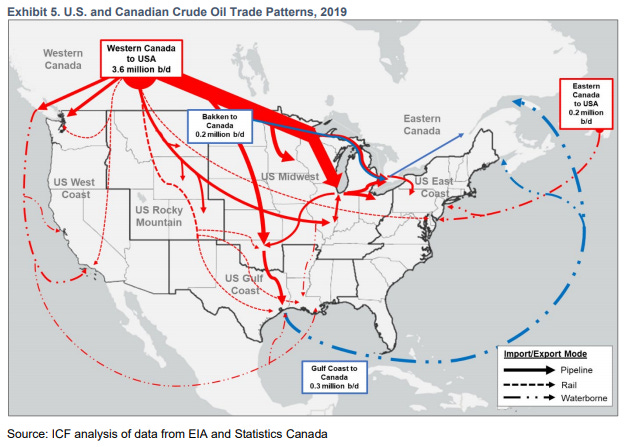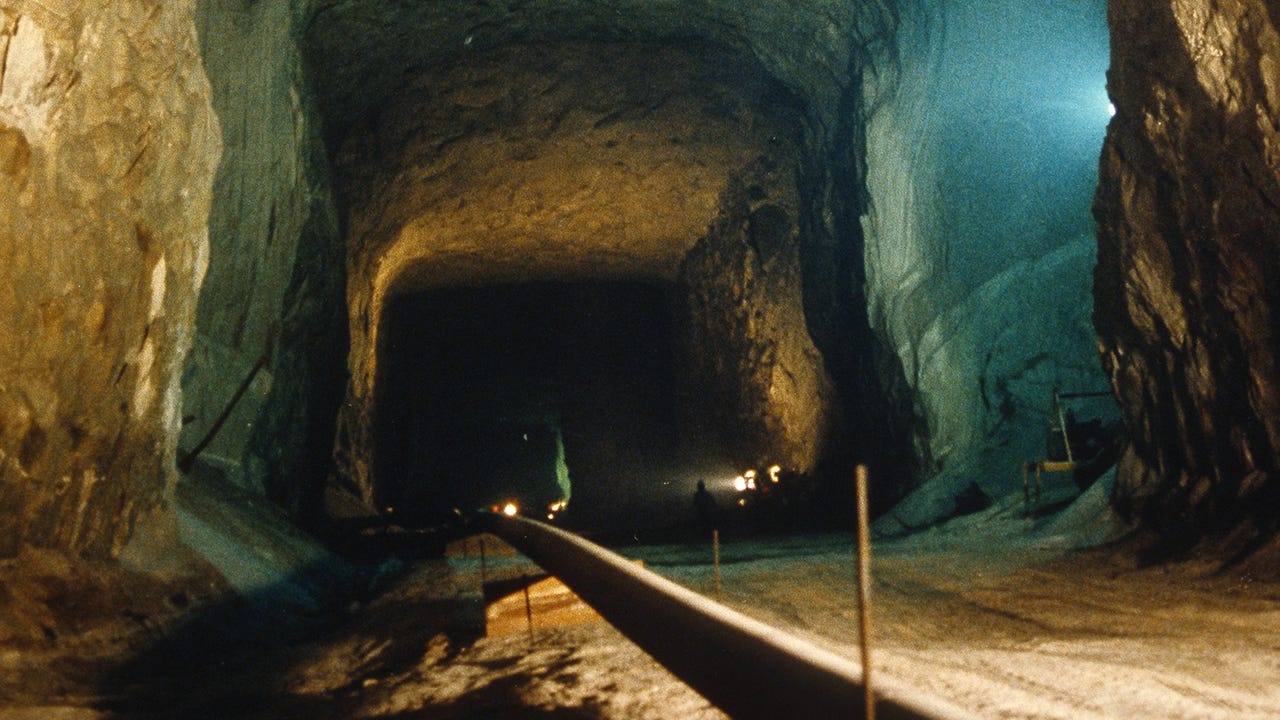Alberta is in a tough spot. President Trump has repeatedly warned of 25% tariffs against Canada’s exports to the U.S. That’s caused quite a bit of fear, and posturing of retaliation. Trade negotiators are always keen on responding to tariffs with tariffs of your own (i.e. taxes on imported products from the U.S.).
The tricky part here is that Canada-U.S. trade is pretty lopsided relative to our economies. Canada is a small economy, total trade adds up to nearly 70% of GDP. But - as is normal for more populous countries - trade only adds up to 25% of U.S. GDP.
Throwing sand in gears of trade - especially with our biggest trading partner, would be very painful for us, and might hardly be noticed by most Americans. The role of the auto industry, its size, interconnectedness and location in vote-rich Ontario, makes that even worse.
So we should be looking at the most cost-effective ways to respond to American threats. That naturally leads to oil.
Although America’s reliance on foreign oil has declined since the shale boom, it’s still a weak spot for America. People care more about the the price at the pump than any other price. I think that’s why there’s been talk in Canada of cutting off oil exports, or imposing an export tax on oil.
Who “pays” for taxes on traded oil (from tariffs or an export tax) is complicated. In theory, it could be American consumers at the pump, American refineries, or Canadian oil producers, or likely a mix of the three. Like most energy topics, that’s all too complicated for me. But I do think that the best way to ensure that the financial pain is felt by Americans is affect the physical flows of oil.
Say we want to send less oil to the U.S. Right now, that means we need to lower Alberta’s oil production, because we don’t have the infrastructure to move enough oil anywhere other than the U.S. Having more pipelines that don’t serve the U.S., like Northern Gateway or Energy East would be nice. But Canada’s oil infrastructure has developed over decades to sell to Americans, and pipeline’s aren’t a quick build. If we’re already talking longer-term solutions to U.S. energy trade dependence, I think there are other solutions than pipelines.
So, I’ll avoid getting into pipeline debates, but I am interested in breaking the link between production and exports. The answer is storage. Huge amounts of storage.
In the U.S., the Strategic Petroleum Reserve (SPR) has a capacity of 714 million barrels. Canada’s oil exports (to all countries) is about 3.5 million barrels per day. That means if we had an SPR of our own, we’d have the capacity to store about 200 days worth of exports.
To flesh that out, we could cut our exports by half for over a year if we built and fully filled an SPR-type project. U.S. refineries in the Gulf and Midwest, whose pipelines would dry up and whose facilities are often designed for heavy Canadian crude, would suffer severely.
Meanwhile, Alberta oil producers could continue to operate as normal. Effective demand for oil would remain, and it’s likely that the prices received would improve. U.S. refiners and their customers still want to operate, even if its at a short term loss. The usually discounted Western Canadian Select price would surely see a record low discount.
An SPR is only a short term pressure tactic (and isn’t a short term build!), but it could be a permanent point of leverage that Canada doesn’t have now. It’s fascinating to think of the contrast to the U.S. SPR, too. Americans started the SPR in 1975, after the OPEC oil crisis of 1973, to provide a temporary cushion to oil supply in moments of crisis, where production and imports can’t meet demand (most recently at the start of the Russian invasion of Ukraine). That means, they usually want it to be full, so they can empty it it quickly. Canada’s SPR would work in reverse, we’d mostly keep it empty! We want to keep the ability of letting production run ahead of exports and consumption.
Beyond Trump’s tariffs, massive storage could also be helpful to manage Alberta’s oil discount.
Pipeline outage? Fill up the SPR.
U.S. refinery maintenance cuts demand? Fill up the SPR.
WCS discount being set by crude-by-rail? Fill up the SPR.
Big storage would give Alberta’s largely steady, long-term projects some flexibility, the type of flexibility that countries in OPEC use to financial and political gain.
Buying enough oil to fill a SPR would be expensive (about CAD $50bn at CAD$70/bbl). But that oil is also an asset that you can sell later. You’d probably need to compensate pipeline companies for lost tolls, but that could something like $3bn at $4 per bbl.
As opposed to setting up an Alberta vs. everyone fight, this would be a massive benefit to the province, and wouldn’t be as opposed outside of Alberta. It isn’t about growing Alberta’s oil sands production, but ensuring they get a fair price for the oil they already produce.
This is all fun with numbers. And the reality of mass oil storage is that it seems to rely on geological luck - you need giant, empty underground caverns to put it in. And those caverns need to be in Alberta or Saskatchewan, where the oil and infrastructure is already. I have no idea if we have those. I’m sure there’s a ton of other problems too, like can you get Canada’s heavy oil back out of the cavern? Oil sands oil is tough enough to extract the first time!
But the point is we should be looking at how to gain leverage over the Americans without punishing Alberta. Storage could play a role!









Google maps go in close to where the 845 and highway 4 south of Lethbridge meet at Procor try to count the number of rail cars there owned by Warren and his friends there’s your storage yard
Very good forward thinking 🤔 but who do you think really owns the oil , once the soil is touched by an American shovel they then take ownership of the product , and divide up the income as they see fit , and sell it to the customers of their choice , we are like a cow that is being milked with no say in the process,(some think we do but ….) that’s why the rail cars filled with oil go south and not east to supply the Canadian market . Rail cars could be used for storage , on the tracks heading east.